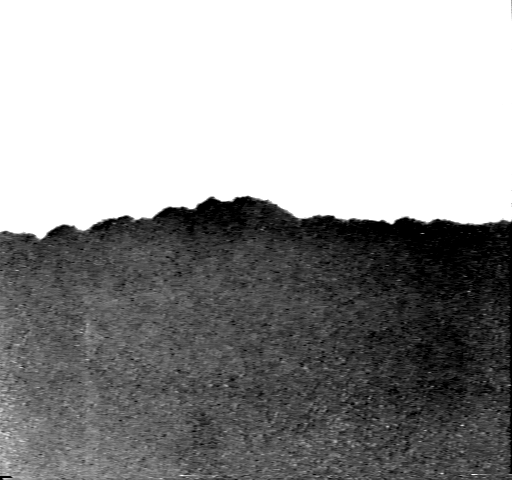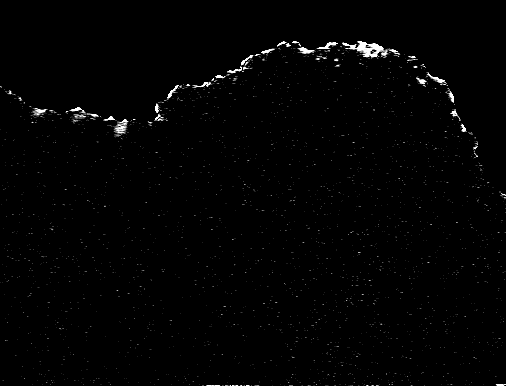
An image of an air/water interface in a model porous medium. The medium is made of small glass beads held between two closely-spaced Plexiglass plates. The water is dark in the image, and is moving slowly upward.

An image of an air/water interface in a model porous medium. The medium is made of small glass beads held between two closely-spaced Plexiglass plates. The water is dark in the image, and is moving slowly upward.
The interface between the air and water is a self-affine fractal, characterized by a a roughness exponent of approximately 0.65.
One important characterization of different models of interface motion is the universality class. In theoretical models, one way to determine that is to examine the response of the system to an imposed overall tilt. In an experimental system, it is not easy to impose an overall tilt. However, we were able to show how to extract that same information from the evolution of the interface shape.
This paper was published with R. Albert and A.L. Barabasi
from Notre Dame as
R. Albert, A.L. Barabasi, N. Carle, and A. Dougherty,
"Driven interfaces in disordered media: Determination of universality
classes from experimental data"
Physical Review Letters
81, 14, 2926-2929 (1998).
Another important characterization is the way in which the interface moves: It does not move smoothly and uniformly. Instead, portions of the interface tend to get "pinned" and stop, while others continue to move ahead. Eventually, those pinned regions can break free, resulting in an "avalanche" or bursting motion.

We visualize the dynamics by comparing two images taken a short time apart. This figure shows those regions of the interface that have moved during a brief time interval in bright white.
A paper describing these avalanches was published as
A. Dougherty and N. Carle
"Distribution of avalanches in interfacial motion in a porous medium"
Physical Review E
58
Number 3, Part A, 2889-2893 (1998).
A prepring of this paper is also available as a
PDF file.